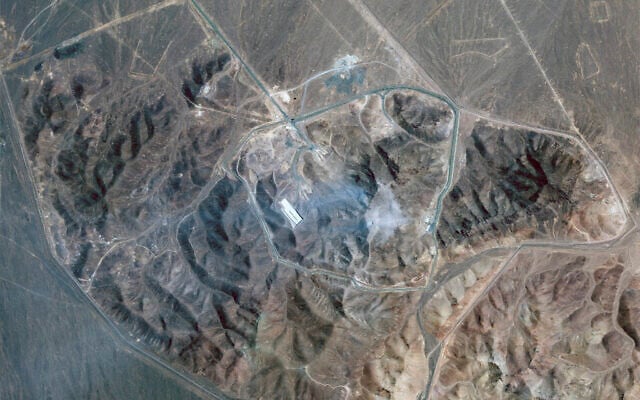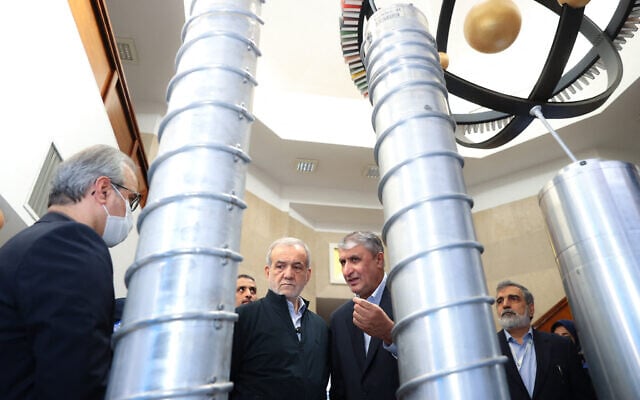



The head of France’s foreign intelligence service said Tuesday that some of Iran’s highly enriched uranium stocks were destroyed by American and Israeli strikes, but there was no certainty on where the rest was now located until UN nuclear inspectors were let back into Iran.
Speaking in an interview on LCI television, Nicolas Lerner, who heads the DGSE, said Iran’s nuclear program was “very, very delayed” by the strikes. Asked how long the nuclear program was set back, he said it had been delayed by several months.
Lerner said there was a possibility Iran could press ahead with a clandestine nuclear program with smaller enrichment capacities.
“That’s why France is so attached to finding a diplomatic solution to this nuclear crisis,” he said.
The comments came as a French diplomatic source said European powers would have to restore UN sanctions on Iran if there were no nuclear deal that guaranteed European security interests. The source spoke to Reuters after a call between French Foreign Minister Jean-Noel Barrot and his UK counterpart David Lammy ahead of a Franco-British summit.
The Iran-US nuclear negotiations were reportedly set to resume this week following a pause brought on by the 12-day Israel-Iran war in June. Negotiations had snagged on the issue of uranium enrichment, which US President Donald Trump has demanded Iran give up altogether.
Though Iran denies seeking nuclear weapons, it enriches uranium to 60% — far beyond what is needed for civilian use, and a short step away from weapons-grade. Israel says Iran recently took steps toward weaponization. Following the war last month, Iran also halted all cooperation with the International Atomic Energy Agency, the UN nuclear watchdog.
During the war, the US struck Iran’s three main nuclear sites, including Fordo, which was thought to be penetrable only with US “bunker buster” bombs.
Trump said the strikes “obliterated” the nuclear sites and Iran’s highly enriched uranium stockpile, but US and European intelligence reportedly indicated that the sites were not entirely destroyed, and that the uranium was moved ahead of time.
Lerner, who was speaking for the first time on French national television, said “no intelligence service in the world was capable in the hours after these strikes of making a perfect, full evaluation of what happened.”
“There’s consensus on the fact that the material — the 450 kilograms [990 pounds] of enriched uranium — maybe a small part was destroyed, but that material remains in the hands of the regime,” he said.
“Today we have indications [on where it is], but we cannot say with certainty as long as the IAEA does not restart its work. It’s very important. We won’t have the capacity to trace [the uranium]” without the IAEA, Lerner said.
“Our assessment today is that every stage of the process,” from enriching uranium to designing a nuclear warhead and mounting it on a missile, “was very seriously affected, very seriously damaged,” said Lerner. “The Iranian nuclear program as we know it has been very, very delayed.”
“Nevertheless,” the assessment “needs to be fine-tuned,” he said, adding that it was important to remain “cautious.”
Israel launched a sweeping assault on Iran’s top military leaders, nuclear scientists, uranium enrichment sites, and ballistic missile program on June 13, saying the operation was necessary to prevent the Islamic Republic from realizing its avowed plan to destroy the Jewish state.
Iran retaliated to Israel’s strikes by launching over 500 ballistic missiles and around 1,100 drones at Israel. The attacks killed 28 people and wounded over 3,000 in Israel, according to health officials and hospitals. In all, there were 36 missile impacts and one drone strike in populated areas, causing damage to 2,305 homes in 240 buildings, along with two universities and a hospital, and leaving over 13,000 Israelis displaced.


